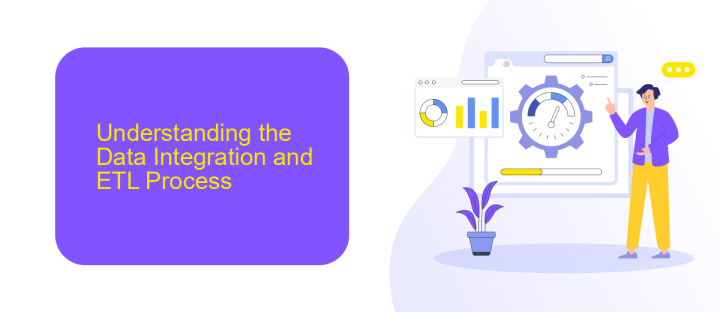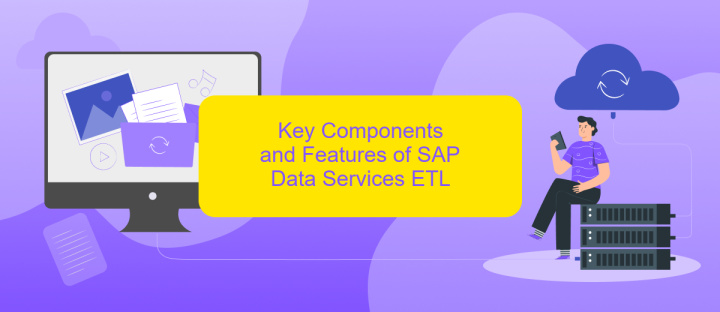SAP Data Services ETL
SAP Data Services ETL is a powerful tool designed to streamline the extraction, transformation, and loading (ETL) of data across various systems. This versatile solution enhances data quality, simplifies data integration, and supports complex data workflows, making it an indispensable asset for businesses aiming to leverage their data for strategic decision-making and operational efficiency.
Introduction to SAP Data Services ETL
SAP Data Services ETL is a powerful tool designed to facilitate the extraction, transformation, and loading of data across various systems. It enables organizations to efficiently manage and integrate their data, ensuring high-quality and reliable information for business operations and decision-making processes.
- Data Extraction: Seamlessly extract data from diverse sources, including databases, applications, and cloud services.
- Data Transformation: Apply complex transformations to data, ensuring it meets the specific needs of your business processes.
- Data Loading: Efficiently load transformed data into target systems, maintaining data integrity and consistency.
- Integration with Tools: Integrate with third-party tools like ApiX-Drive to automate and streamline data workflows.
By leveraging SAP Data Services ETL, businesses can achieve a unified and accurate view of their data landscape. The integration with tools such as ApiX-Drive further enhances its capabilities, allowing seamless automation of data integration tasks and reducing manual efforts. This ensures that organizations can focus on deriving actionable insights from their data, driving strategic growth and operational efficiency.
Understanding the Data Integration and ETL Process

Data integration and ETL (Extract, Transform, Load) processes are fundamental in ensuring that data from various sources is harmonized and made accessible for analysis and decision-making. SAP Data Services ETL provides a robust platform for extracting data from multiple sources, transforming it to meet business requirements, and loading it into target systems. This process ensures that data is accurate, consistent, and ready for use in business intelligence and analytics applications.
Effective data integration requires seamless communication between disparate systems. Tools like ApiX-Drive can play a crucial role in this aspect by automating the integration process. ApiX-Drive enables businesses to connect various applications and data sources without extensive coding, ensuring that data flows smoothly between systems. By leveraging such tools, organizations can streamline their ETL processes, reduce manual intervention, and improve the overall efficiency of their data management strategies.
Key Components and Features of SAP Data Services ETL

SAP Data Services ETL is a comprehensive tool designed to facilitate data integration, transformation, and loading processes, ensuring that businesses can efficiently manage their data workflows.
- Data Integration: Seamlessly integrates data from various sources, including databases, applications, and cloud services.
- Data Transformation: Provides robust capabilities for data cleansing, enrichment, and transformation to ensure data quality and consistency.
- Data Loading: Efficiently loads transformed data into target systems, such as data warehouses and data lakes, optimizing performance and scalability.
- Job Scheduling: Allows for automated scheduling of ETL jobs, ensuring timely data processing and availability.
- Monitoring and Administration: Offers comprehensive monitoring and administration tools to track job performance and troubleshoot issues.
In addition to these core features, SAP Data Services ETL can be complemented with integration services like ApiX-Drive, which streamlines the setup of data integrations and automates workflows between various applications. This ensures that businesses can maintain seamless data flows and enhance operational efficiency.
Benefits and Use Cases of SAP Data Services ETL

SAP Data Services ETL is a powerful tool designed to streamline and optimize data integration processes. It allows organizations to extract, transform, and load data from various sources into a centralized repository, ensuring data consistency and accuracy. This capability is essential for businesses looking to make data-driven decisions and improve operational efficiency.
One of the key benefits of SAP Data Services ETL is its ability to handle large volumes of data with high performance. It supports a wide range of data sources and formats, making it versatile and adaptable to different business needs. Additionally, the tool offers advanced data transformation capabilities, enabling users to cleanse, enrich, and aggregate data effectively.
- Improved data quality and consistency
- Enhanced performance for large-scale data processing
- Support for diverse data sources and formats
- Advanced data transformation and enrichment capabilities
- Seamless integration with other SAP solutions
For businesses looking to automate and streamline their data integration processes, tools like ApiX-Drive can complement SAP Data Services ETL by providing easy-to-use interfaces for setting up integrations without the need for extensive coding. This combination can significantly enhance the overall efficiency and effectiveness of data management strategies.
- Automate the work of an online store or landing
- Empower through integration
- Don't spend money on programmers and integrators
- Save time by automating routine tasks
Implementation and Best Practices for SAP Data Services ETL
Implementing SAP Data Services ETL involves a series of steps to ensure efficient data extraction, transformation, and loading processes. Begin by defining clear data requirements and mapping out the data flow from source to target systems. Utilize the Data Services Designer to create and configure data flows, transformations, and workflows. Pay close attention to data quality by incorporating validation and cleansing steps within your ETL processes. It is crucial to test all data flows thoroughly to identify and resolve any issues before moving to production.
Adhering to best practices can significantly enhance the performance and reliability of your ETL processes. Optimize data flows by minimizing data movement and leveraging push-down operations where possible. Implement robust error handling and logging mechanisms to monitor and troubleshoot ETL jobs effectively. Regularly review and update your ETL processes to adapt to changing data requirements and system updates. Additionally, consider using integration services like ApiX-Drive to streamline and automate data integration tasks, ensuring seamless connectivity between various data sources and destinations.
FAQ
What is SAP Data Services ETL?
How does SAP Data Services improve data quality?
Can SAP Data Services handle real-time data integration?
What are the common use cases for SAP Data Services?
Is there a way to automate and simplify the integration process with SAP Data Services?
Time is the most valuable resource for business today. Almost half of it is wasted on routine tasks. Your employees are constantly forced to perform monotonous tasks that are difficult to classify as important and specialized. You can leave everything as it is by hiring additional employees, or you can automate most of the business processes using the ApiX-Drive online connector to get rid of unnecessary time and money expenses once and for all. The choice is yours!


